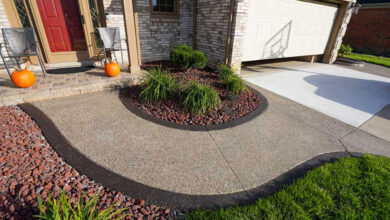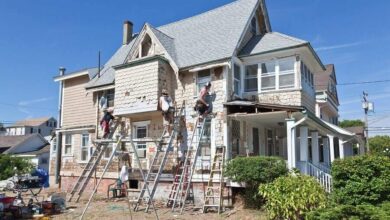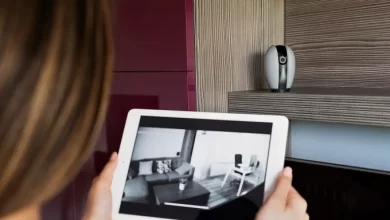The Complete Guide to Smart Home Technologies

Imagine waking up in the morning to the sound of your favorite song gradually increasing in volume as the smart lights in your bedroom slowly brighten to mimic a sunrise. You check your tablet and see that your home security system activated overnight when it detected motion outside and sent a notification with video to your phone. After getting ready for the day, you head to your kitchen and ask your smart speaker to read the morning news and weather report while the coffee maker starts brewing a fresh pot. The thermostat has already adjusted to a comfortable temperature after analyzing your usual wake-up routine. You lock the front door with a tap on your phone as you head out for the day, with full confidence your home will continue running smoothly in your absence.
This scenario illustrates the incredible convenience and peace of mind provided by smart home technologies that allow for automated, connected management of appliances, lighting, heating/cooling systems, entertainment, and security in residential settings. As smart home devices and AI capabilities continue advancing at a rapid pace, homes are becoming smarter and more responsive than ever before.
Smart Home Technologies
Smart home technologies have transformed modern living by introducing automation, voice controls, remote access, and AI integration to countless household systems and appliances. When responsibly implemented, these innovations provide homeowners with unmatched levels of convenience, efficiency, security, and customization. However, smart home technologies also come with risks and challenges that must be properly addressed. Overall, these systems have immense potential to make homes safer, more functional, and better adapted to the needs of users when thoughtfully incorporated into everyday life.
Introduction
Smart home technologies refer to internet-connected devices and systems that monitor, automate, and control various functions within a home. These technologies allow homeowners to remotely manage things like lighting, temperature, security, entertainment systems, and appliances through smart devices like phones, tablets, voice assistants, and hub controllers.
The integration of advanced automation, AI, and the Internet of Things has transformed once-dumb devices into connected smart home tech that can be controlled from anywhere and customized around owners’ living patterns. The smart home market has exploded in recent years, with an estimated billion devices in homes by 2023.
Several factors drive the popularity of smart home tech. Firstly, it provides unparalleled levels of convenience by allowing remote access and automation of household systems. Secondly, smart home devices promote energy efficiency, security, and safety through features like smart thermostats, automated lighting, and home monitoring systems. Lastly, the ability to customize and sync devices to residents’ specific needs and preferences enables deeper integration with daily lifestyle habits.
In this guide, we will cover the key benefits, major types of smart home technologies, factors for choosing the right systems, popular smart devices, future trends, risks and challenges, best practices for usage, real-world examples, and final thoughts on the promising future of smart homes.
Benefits of Smart Home Technologies
Smart home technologies offer numerous benefits that enhance comfort, convenience, efficiency, security, and overall quality of life for residents. Key advantages include:
Increased Convenience and Comfort
Smart home devices allow for automation, scheduling, and voice control of many household systems like lighting, temperature, appliances, and more. This provides unparalleled convenience by syncing devices to residents’ needs and lifestyle patterns, along with remote access. For instance, smart lights can automatically turn on at certain times, while smart speakers make controlling various devices hands-free. Overall, smart home tech minimizes manual work needed to manage a home.
Improved Energy Efficiency
Many smart home systems help optimize energy use through automated scheduling, usage monitoring, and AI integration. Smart thermostats can adjust heating and cooling based on occupancy patterns to avoid waste. Smart lighting minimizes unnecessary usage. Meters provide detailed energy consumption data to reveal saving opportunities. Together these features promote sustainability and lower utility bills.
Enhanced Security and Safety
Smart home technologies enable home monitoring and control even from remote locations through apps and voice commands. Features like smart locks, intruder alarms, connected cameras, and AI-enabled monitoring systems help ensure homes stay protected. Smart smoke and CO detectors can send alerts about emergencies and some even integrate with lighting or sprinklers to mitigate threats. These capabilities heighten home security.
Cost Savings
While smart devices require upfront investment, their automation capabilities, energy efficiency, security protections, and convenience features provide both short-term and long-term cost savings. For instance, monitoring energy consumption typically helps lower bills. Preventing damages through quick emergency alerts reduces costly repairs. Features like automation also enhance convenience in ways that indirectly save money. Overall, smart homes deliver better financial value.
Types of Smart Home Technologies
There are several major categories of smart home technologies available today that serve various functions:
Smart Lighting Systems
These allow lighting control through smartphones, voice assistants, and automated scheduling. Smart bulbs can change colors, dimness, and mimic routines like sunrise/sunset. Lighting control panels and in-wall switches also provide smart capabilities. Features include scheduling, dimming, occupancy-based activation, daylight adjustment, and grouping lights. This allows easy automation for efficiency and convenience.
Smart Thermostats
These connect HVAC systems to the internet and phones for remote temperature adjustment and automation. Smart thermostats learn occupant patterns over time. Advanced models use built-in sensors, weather data, and AI to optimize heating and cooling for comfort, efficiency, and cost savings. Most are programmable and integrate with smart home platforms.
Smart Security Systems
These systems equip homes with connected cameras, smart locks, sensors, alarm panels, and monitoring capabilities for enhanced security. Features may include intruder alerts, real-time video feeds, anomaly detection, facial recognition, and integration with lighting, door locks, police, etc. for added safety. Remote access allows arm/disarm capabilities from anywhere.
Smart Entertainment Systems
These allow centralized multi-media control and access across TVs, speakers, gaming consoles, streaming devices, and smart assistants. Mobile apps become entertainment hubs to navigate content across devices. Voice commands simplify media control. Automation capabilities include scenarios like Movie Mode which closes shades and adjusts lighting automatically.
Smart Appliances
A growing number of appliances offer smart capabilities such as internet connectivity and smartphone control/monitoring. Smart refrigerators have cameras for peeking inside remotely, sensors to track usage patterns and inventory, and touchscreens for leaving notes. Smart laundry machines can automatically dispense detergents and be scheduled to run when energy rates are low.
Factors to Consider When Choosing Smart Home Technologies
Upgrading to a smart home requires evaluating choices to find solutions fitting your needs and home setup. Key factors to consider include:
Compatibility With Existing Devices/Systems
Choosing smart home technologies that integrate with your current tech setup ensures smoother adoption and avoids replaced equipment. Checking compatibility also minimizes need for added hubs/bridges. For instance, opting for a smart thermostat that works with your HVAC system or smart bulbs usable with existing fixtures/switches.
Ease of Use and Installation
Look for smart home devices and platforms designed for simplified setup and intuitive ongoing use. Systems requiring complex programming or troubleshooting become burdens quickly. Read customer reviews to gauge real-world ease of use. Also consider if professional installation is recommended or DIY is appropriate.
Costs and Budget
Smart home upgrades require assessing affordability. Consider both upfront costs of devices and ongoing fees like subscriptions or data plans. Defining your budget priorities helps target the right technologies. A phased approach can make adopting more feasible, like focusing first on automation systems for energy/cost savings.
Security and Privacy Concerns
Being vigilant about cybersecurity and privacy is critical when implementing connected smart home tech. Review how well systems protect data access through encryption, multi-factor authentication, restricted permissions, and timely software updates. Also check policies and settings for monitoring use, sharing data, and allowing connectivity.
Popular Smart Home Technologies on the Market
Many notable smart home platforms and devices exist today. Some key options include:
Amazon Alexa
One of the most widely-used voice assistant platforms allows controlling compatible smart devices through Alexa. The ecosystem includes Alexa built-in to appliances, Alexa smart speakers, display screens, etc. It interfaces with a vast range of third-party tech like lights, thermostats, TVs, security systems and more. Routines can be scheduled, and skills added for expanded capabilities.
Google Home/Assistant
Google’s smart assistant platform powers the Google Home smart speakers and displays. The voice assistant controls compatible third-party apps and smart home devices like cameras, switches, thermostats, entertainment systems and more. Custom Assistant routines can be created for automation. It integrates with Nest smart home equipment like cameras, doorbells, smoke alarms.
Apple HomeKit
Apple’s platform for controlling/automating connected smart home devices uses Siri voice commands and the Home app. Mainly designed for iOS/MacOS users, HomeKit works with approved third-party products like lights, plugs, locks, HVAC, security systems, and appliances, allowing centralized control. Advanced automation can be programmed via the app.
Samsung SmartThings
This dedicated smart home platform by Samsung connects and controls compatible devices through the SmartThings app and Hub. Includes integration for lighting, outlets, switches, locks, sensors, thermostats, cameras, appliances. Scenes and routines can be programmed for automation triggers like time of day, modes, events. Works with Google Assistant and Amazon Alexa.
Philips Hue
A top brand for smart lighting products. Philips Hue bulbs connect to the Hue Bridge, allowing voice and app control of color, dimming, routines, etc. Extensive compatibility with major smart home platforms allows integration into broader connected ecosystems. Hue offers a range of bulbs, lightstrips, recessed, outdoor, and specialty lighting.
The Future of Smart Home Technologies
Smart home tech has immense potential for transformative growth as homes get increasingly connected, automated, AI-powered and voice-controlled. Key trends shaping the future include:
Deeper Integration with AI and Machine Learning
Expanding machine learning and artificial intelligence capabilities within smart home devices and platforms will allow homes to operate faster, smoother, and be better customized around users’ living patterns and behaviors over time. Connected devices will coordinate data to optimize automation.
Increased Automation and Customization
With expanding AI integration, smart home routines and controls will become increasingly automated and tailored around homeowners’ unique needs, habits and preferences. Less manual oversight will be needed as systems self-regulate for greater efficiency and convenience.
Growth of the Internet of Things
More “dumb” products and appliances across nearly every home function will gain smart capabilities and internet connectivity at affordable price points. This expands the Internet of Things ecosystem with more seamlessly linked devices. Virtually any household item could integrate with smart home platforms.
Mainstream Adoption
Smart home tech adoption will move beyond early tech adopters to much wider mainstream saturation as costs decrease, utility increases through innovation, and integration within households becomes standard practice in future home building/remodeling. Voice control and touch interfaces also facilitate mainstream comfort.
Challenges and Risks of Smart Home Technologies
While promising, smart home innovations also come with important challenges and risks to address:
Cybersecurity Threats
Internet connectivity makes smart devices vulnerable to cyber attacks and hacking, putting homes and data at risk. Flaws in individual products also undermine security. Strong password practices, multi-factor authentication, encryption, timely updates, and limiting data collection are critical safeguards.
Privacy Concerns
Many smart home devices collect user data for utilization, analysis and sharing that can compromise privacy if not properly restricted and secured. It’s important to monitor what information is gathered and stored locally or in the cloud, how it’s accessed, and if it’s sold or shared with third parties.
Dependence on Technology
Smart homes create potential over-reliance on automated systems and internet connectivity. Network outages or technology failures make homes vulnerable. Ensuring backup power sources, manual overrides, routine maintenance and physical redundancies avoids helplessness if tech breaks down.
Complexity Challenges
The complexity of installing, connecting, integrating, updating, troubleshooting, and customizing smart home ecosystems poses challenges, especially for less tech-savvy users. Poorly implemented or maintained systems frequently malfunction. Smart simplicity in product design is needed.
Best Practices for Using Smart Home Technologies
To maximize benefits of smart home systems while minimizing risks, following certain best practices is recommended:
- Regularly update smart devices, apps, hubs and operating systems to the latest firmware/software to maintain performance and plug security holes. New updates often add features too.
- Use strong passwords unique to each device/system, and enable multi-factor authentication when available, to prevent unauthorized account access.
- Limit the sensitive personal data provided to smart devices and systems to only what’s essential for functionality. Restrict permissions access to apps and sharing data.
- Routinely check connected devices for suspicious activity, network requests or abnormal bandwidth usage that may indicate a breach.
- Use a separate wireless network just for smart home devices to isolate them and limit exposure of other networked electronics.
- Ensure smart products offer encryption of wireless data transmissions to block external snooping of sensitive communications.
- Maintain physical manual control options for certain critical systems like locks, smoke detectors, and alarms in case of network disruptions.
- Read all privacy policies and turn off non-essential data collection settings. Adjust sharing permissions with third parties.
- Disable functionality allowing remote access by the manufacturer/developer as this can create security risks if compromised.
- Avoid connecting smart devices directly to critical home systems like alarm panels or lighting circuits which creates more pathways for hacking.
- Carefully research and purchase smart home tech only from reputable trusted brands with positive reviews and verifiable security standards.
- Back up your settings, customizations and connected configurations so they can be restored if needed after any reset or failure situation.
Case Studies: Real-Life Examples of Smart Home Tech
Here are some real-world examples of smart home technologies in action:
Luxury Smart Home Automation
John installed an extensive smart home system during the construction of his new 8,000 square foot home. He wanted to fully automate lighting, temperature, security, entertainment and more for total convenience and energy savings. His installer connected over 75 devices to a central hub including motion-sensing LED lights, motorized window shades, a video door station, smart thermostats and exterior cameras. This smart ecosystem allows John to control everything remotely and program automatic routines like arming security at bedtime, adjusting multiple zones of heating/cooling when away, and triggering outdoor accent lighting at sunset. He saves substantial energy costs and enjoys a dream automated home.
Smart Security Deters Break-in Attempt
When Lena installed a video doorbell and security system with motion sensors and glass break detectors, she didn’t expect to rely on it so soon after. However, the system proved its value one night when Lena was awoken by her smartphone security alerts. The cameras showed a suspicious person trying to force open a window while interior motion sensors were triggered. Lena sounded the siren and called the monitoring center. The loud alarm scared the intruder away and police were dispatched. Without her smart home security system, the criminal likely would have succeeded.
Automated Energy Savings
Bill installed smart thermostats and incorporated his appliances into his smart home ecosystem to analyze energy usage habits and automatically reduce waste. By monitoring occupancy patterns and programming the thermostats accordingly, Bill ensured heating and cooling only activated when needed. His smart washing machine runs when electric rates are lowest, and his smart refrigerator modulates temperature and energy usage based on usage data. After a few months Bill was thrilled to see 15% lower electric bills by leveraging his smart home’s energy automation capabilities.
Conclusion
The automation, convenience, and functionality potential of smart home technologies provide solutions that seem limited only by imagination. When thoughtfully implemented with security precautions in mind, smart devices and connected platforms can enhance residents’ comfort, efficiency, productivity, and peace of mind in profound ways. Homes are becoming more responsive to human needs, safer, more sustainable, and better adapted to owners’ living patterns.
As smart home technology integration advances through AI, expanding IoT ecosystems, and consumer-friendly design, homes will increasingly operate more intelligently and automatically. However, devices and data must be properly secured and maintained. Finding an optimal balance between innovation and responsible use will allow smart homes to achieve their promise of making life easier while avoiding risks. Overall, the future is bright for residential settings where connected tech fades into the background and spaces cater more seamlessly to how residents truly live.




